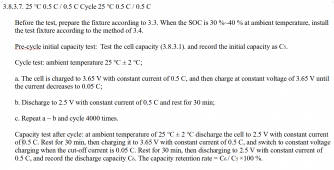Cheap 4-life
My body is 2.63 trillion volts, .07v per cell
Compression is now apparently clarified in the datasheets, so it may be best to not cling to the information in older datasheets. They now mention a compression force range, which (for 230 Ah cells anyway) happens to equate to about 3kN (11.7 PSI) to 5kN (19.6 PSI). The implication is that this compression is the normal range of a cell taken from 30% SOC at 11.7 PSI to 100% SOC in a hard fixture (no springs or foam). Under normal conditions, the force should not exceed 7kN (27.5 PSI). It can exceed that if internal damage or cell leakage occurs.
In other words, when they said 11.7 to 18 PSI before, it seems they didn't mean don't let your compression exceed 18 PSI, they meant that if you clamp the thing rigidly the internal force will not exceed 18 PSI. This is what the new datasheet seems to say (well, now 19.6 PSI). It doesn't matter if they clamped one cell or one hundred in a stack. The force inside will be the same.
Well that’s not what I get out of the new data sheet.. it is for one cell not many compressed together.. if there’s more than one cell (8 or 16 or 19etc) then there’s more cells creating more expansion than what the data sheet is saying one cell is contributing.. therefore needing more room to expand than one cell. If room is not given for the cells to expand as in a rigid fixed structure then the cells (when multiple are put together, in my case 19) will have more pressure applied to them than one cell would in a fixed structure.. if one cell only expands .5mm then 19 cells want to expand 9.5mm therefore creating more pressure in a fixed rigid structure.. containing that expansion and preventing it with springs which are applying enough constant/similar force throughout the entire SOC also prevents over pressurizing/over compression of the cells.
Again a lot of premade packs (server rack) are not using springs and are instead using straps (which can stretch) and maybe the side of the case for compression. BUT they are (or should be) also using welded busbars or flexible busbars which prevent loosening of the busbars to prevent bms from reading the cells incorrectly and therefore balancing incorrectly.. A DIYed rigid fixed structure with or without foam should absolutely use flexible busbars. As long as there isn’t to much pressure/compression at high SOC and enough pressure at low SOC then it will most likely be fine.. but again who am I to say, I am learning as I go
Last edited:



